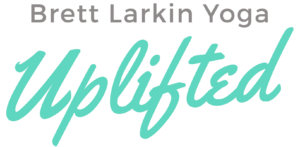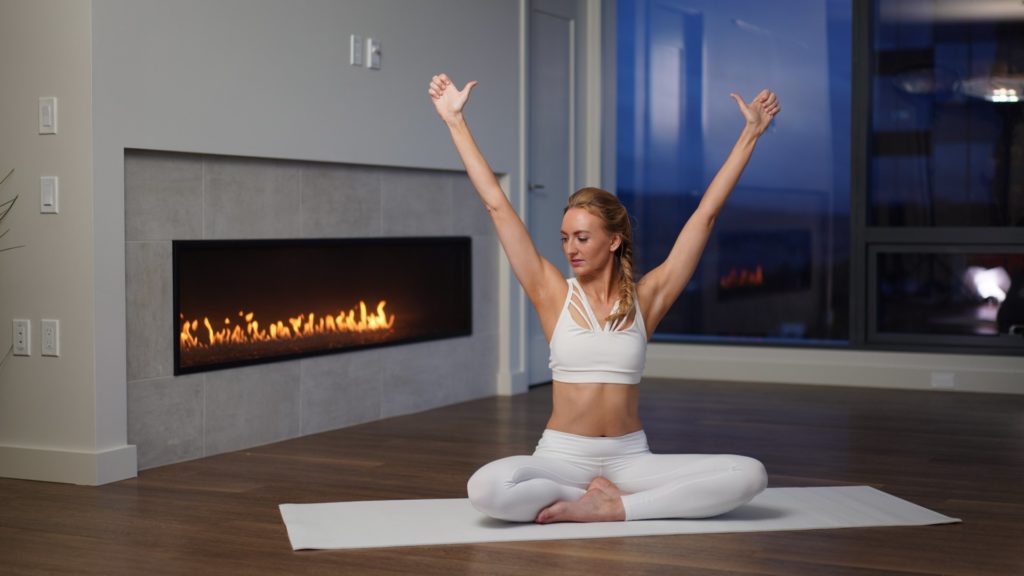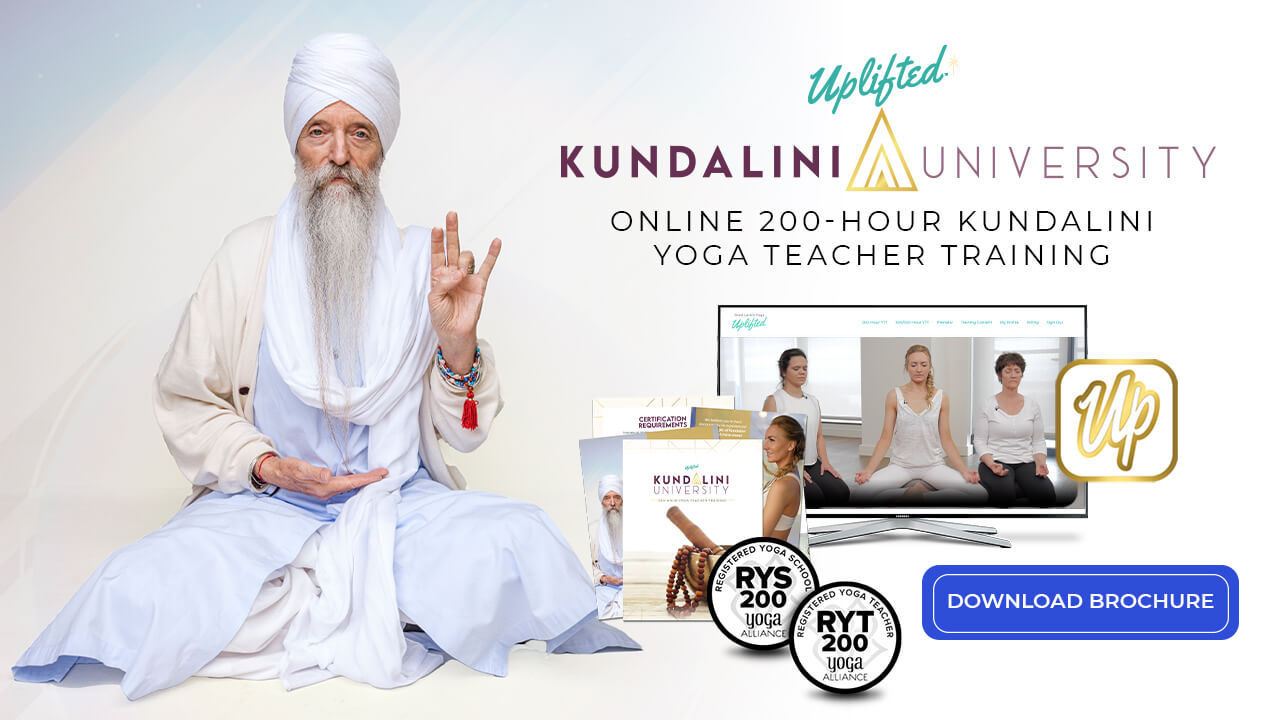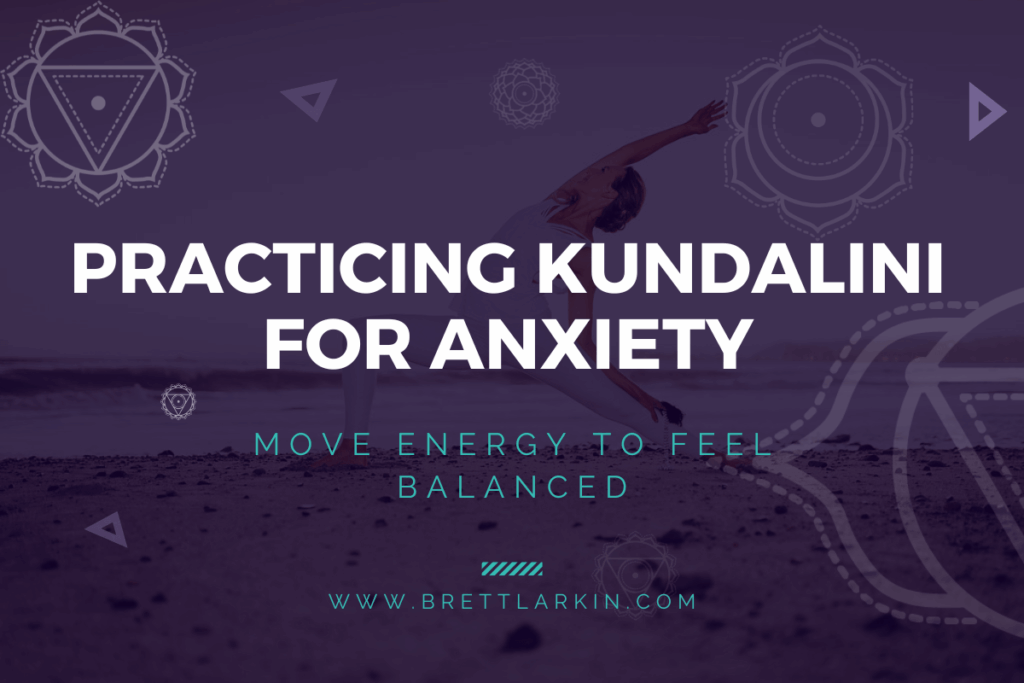
Do you struggle with racing thoughts, tension, or emotional overwhelm? What if I told you that Kundalini Yoga is great for anxiety relief? Kundalini Yoga offers powerful, effective tools to recalibrate your nervous system and release stored stress. Through breath, movement, visualization, and mantra, this ancient practice helps you reconnect to calm and the present moment – fast.
Benefits Of Practicing Kundalini Yoga For Anxiety
Kundalini Yoga is an integrative approach that can significantly reduce anxiety. One of its biggest benefits is that it regulates your autonomic nervous system and helps you enter your parasympathetic state – your body’s “rest and digest” mode.
In 2020, results were published for a study that compared the efficacy of Cognitive Behavioral Therapy (CBT), Kundalini Yoga, and a control stress education intervention as treatment for Generalized Anxiety Disorder (GAD). The study found that Kundalini Yoga was helpful for assisting individuals to achieve notable improvements in anxiety symptoms compared to those in the stress education control group. CBT performed the best as a first-line treatment.
(I’d love to see a study that compares Somatic Yoga to these three options!)
From an Uplifted perspective, Kundalini Yoga isn’t just about symptom relief – it’s about helping you enhance the quality of your energy circulation so you can transform and elevate yourself to live in your optimal state of self. This style of yoga doesn’t ask you to “fix” yourself; instead, it invites you to feel, to release blocks, remove fear, and re-pattern through conscious breath, movement, and mantra. Many students report feeling lighter, more emotionally resilient, and deeply connected to their intuition.
As an example: After a tough day, three minutes of Ego Eradicator with Breath of Fire can dramatically shift your mood. Your spine lengthens, your brain quiets, and suddenly, clarity returns.
Whether you’re new to the practice or guiding others through it, Kundalini Yoga is a powerful modality for healing your anxious mind and body.
Top Kundalini Practices For Anxiety
There’s no one-size-fits-all practice in Kundalini Yoga. You and your kundalini energy are unique. What you need may differ from what would work for me or others in class with you.
Fortunately, Kundalini Yoga offers a toolkit that addresses anxiety from multiple angles: breathing techniques, movement, mantra, and mudra. Here are some of the most effective practices to calm your nervous system and promote emotional release.
Are You Chanting Correctly? Refine Your Tune with Me! 👇

Are You Chanting Correctly? Refine Your Tune with Me!

1. Kundalini Meditations for Anxiety
Practice: Kirtan Kriya
| Element | Description |
| Posture | Easy Pose, straight spine. Option to sit in a chair with feet flat on the floor. |
| Eyes | Closed, gently turned upward to focus on your Third Eye. |
| Mudra | Hands rest on your knees, palms face up. Using both hands simultaneously; each thumb touches the tips of the other four fingers in sequence with the mantra syllables: Sa (index), Ta (middle), Na (ring), Ma (pinky). |
| Breath | Natural, rhythmic breathing as you chant aloud, whisper, then silently. |
| Mantra | Sa Ta Na Ma — aloud (2 min), whisper (2 min), silent (4 min), then reverse with 2 more minutes of whisper followed by 2 minutes aloud. |
| Visualization | Imagine a continual flow of energy above your head. It enters through the crown of your head and then turns to exit through your Third Eye. |
| Duration | 12 minutes total. |
| Variations | Imagine energy flowing through each of your chakras as you chant. Energy enters at your Crown Chakra, and flows down your body. As it reaches your Root Chakra, it turns to exit your body in front of you, forming an L shape. |
| Completion | Raise both arms above your head, fingers spread wide. Stay here as you take 3 full deep breaths. Slowly lower your hands to your heart center. |
| Benefits | Improves cognitive function, reduces anxiety and stress. |
Kirtan Kriya is a much loved “multisensory meditation” in the Kundalini Yoga community. It’s also generated attention in the medical community and through studies has been shown to have positive impacts on mood (reduced anxiety and stress for a calm mind), memory, and gene expression.
Two more Kundalini meditations available for you to explore on my Youtube channel are: Meditation for Anxiety and Stress, and Meditation for Stress and Fear.
Pro Tips for Yoga Teachers:
- Cue this meditation near the end of class to promote emotional integration.
- If meditating silently causes distraction, come out briefly to a whisper and then a loud voice. To instill focus, come back in through a whisper and then silence.
- Allow space afterward to journal or offer quiet reflection.
2. Kundalini Yoga Poses for Anxiety
Practice: Sufi Grind
| Element | Description |
| Posture | Easy Pose, straight spine. Hands face down, hold your knees. Rotate your torso in large, slow circles. |
| Eyes | Closed. Attention directed inward to body sensation. |
| Movement | Large, slow circular rotations of the torso. |
| Breath | Match your breath to your movement. Inhale as your torso moves forward, exhale as you circle back. |
| Duration | 1–3 minutes in each direction. |
| Variations | Experiment with large, full circles of your torso as well as small ones. When you practice with smaller circles, engage a slight Mula Bandha to support your spine. |
| Completion | Inhale, come to center, and retain your breath. Exhale as you need to. |
| Benefits | Loosens hips, supports digestion, and spinal mobility. Eases anxiety. |
Sufi Grind not only loosens your hips but stimulates digestion (where you often hold anxiety), and relaxes your spine. It’s one of my favorite kundalini postures because its rhythmic, circular movement is extremely meditative and cultivates relaxation and calm.
Pair this with gentle Cat–Cow or Spinal Flex to further stimulate the cerebrospinal fluid and release stored tension. My Kundalini Yoga to Release Energy and Emotions is a great practice to explore.
Pro Tips for Yoga Teachers:
- Imagine your pelvis as a pot and you’re stirring it with your torso. This visualization helps you to deepen your awareness of the movement.
- Synchronization of your inhales and exhales to the movement enhances the meditative and calming effects of the practice.
- Offer this as a way to ground before starting more intense kriyas.
3. Kundalini Mantras for Anxiety
Practice: Siri Gaitri Mantra
| Element | Description |
| Posture | Easy pose, spine tall. Option to sit in a chair with feet flat on the floor. |
| Eyes | Closed. |
| Mudra | Elbows tucked into the sides of your torso, rest your forearms on your thighs. Palms face up. |
| Mantra | Ra Ma Da Sa Sa Say So Hung. Pull your navel in firmly when you chant Hung. Try not to stretch out Hung – end it abruptly when you pull your navel in. |
| Breath | Natural, aligned with mantra rhythm. |
| Visualization | Focus on the energies evoked with each sound vibration. |
| Duration | 10–30 minutes (start small and build up), beginners can start with whatever time feels comfortable. |
| Completion | Inhale, hold breath, exhale. Repeat 3 times. Final inhale: raise arms and shake hands vigorously overhead. Exhale, and release them down to rest. |
| Variations | Alternate mudra: hold hands at 45° angles from body, palms up, fingers together, elbows remain tucked in. |
| Benefits | Rebalances energy, promotes healing, and calms fear-based stress responses. |
Ra Ma Da Sa Sa Say So Hung is considered to be a healing mantra. It’s especially helpful for bringing your energetic state back into a balance, which allows your body to fully heal. If you find yourself stressed, anxious, or in a state of fear, the vibration that this mantra invites into your body can invite you back to a calm state. Yogi Bhajan, an Indo-American Kundalini Yoga guru, was of the belief that the Siri Gaitri mantra is a powerful healing prayer – maybe the most potent on earth.
You may also like to try my Beginner Mudra Sing Along available for you on Youtube. It’s movement infused with mantra practice to really help you shift your energy.
Pro Tips for Yoga Teachers:
- Offer printed mantra sheets for beginners.
- Explain the meaning of each word to foster connection.
- Encourage students to feel vibration in their chest and throat.
4. Kundalini Mudras for Anxiety
Practice: Hakini Mudra
| Element | Description |
| Posture | Easy Pose, spine tall. Option to sit in a chair with feet flat on the floor. |
| Eyes | Closed. |
| Mudra | Bring the tips of all five fingers on your right hand to touch the tips of their corresponding finger on your left hand. Palms face each other but don’t touch. Hold your hands at the level of your solar plexus. |
| Breath | Inhale deeply through the nose. Let your breath expand your chest and fill your lungs. Exhale slowly. |
| Visualization | Feel the unity of mind and breath. Notice increased sensation between the fingertips. How does this increase your sensation of the connection between your mind and breath? |
| Duration | 5 minutes. |
| Variations | Experiment standing in Tadasana (Mountain Pose) to explore a sensation of being rooted and balanced. |
| Completion | Inhale deeply and hold for a few moments. Exhale and release your hands to rest on your thighs. |
| Benefits | Calms the mind, balances brain hemispheres, and enhances intuition. |
Hakini Mudra is a representation of the union between your mind, intuition, and breath. Your fingers represent the bridge (unity) between your brain’s left and right hemispheres. This balance elicits a calming effect, great to relieve moments of anxiousness.
Other anxiety-busting mudras that I recommend you experience are: Buddhi Mudra, Vayu Mudra, and Garuda Mudra.
Pro Tips for Yoga Teachers:
- Incorporate affirmations with the practice of Hakini Mudra: “My mind is calm and focused.”
- Mix and match Hakini Mudra with different postures. Thunderbolt Pose is considered to increase the sense of groundedness this mudra elicites.
- Hakini Mudra is associated with the Third Eye. Incorporate teachings on Anja Chakra to guide your students when using this mudra.
Take my quiz to learn if YOUR kundalini energy is awakened 👇
FAQ: Kundalini Yoga for Anxiety – Your Top Questions Answered
Is Kundalini Yoga really effective for anxiety, or is it just another trend?
Kundalini Yoga has deep roots and time-tested practices. While it might feel trendy in wellness circles right now, it’s actually been around for centuries—and studies are starting to catch up. A 2020 clinical trial published in JAMA Psychiatry found that Kundalini Yoga led to measurable improvements in individuals with Generalized Anxiety Disorder, even when compared to CBT and stress education interventions. But beyond the science, the real magic is in how it works—activating your parasympathetic nervous system, recalibrating your energy, and restoring your sense of inner safety through breath, mantra, and movement.
How is Kundalini Yoga different from Somatic Yoga or Hatha Yoga for anxiety?
Great question—and one I love to explore in my trainings. Somatic Yoga focuses on interoception and the language of the animal body. It’s all about listening, sensing, and feeling your way back to safety. Kundalini Yoga, on the other hand, works more alchemically with breath, sound, and kriyas to shake things up and re-pattern your energy field fast. Hatha Yoga typically offers more structural alignment and slower-paced postures. All are valuable—but Kundalini’s combination of breathwork, mantra, and rhythmic movement offers a unique cocktail for clearing stuck emotion and elevating your baseline mood.
What if chanting makes me feel uncomfortable or self-conscious?
That’s totally normal. Chanting can feel awkward at first, especially if you’re new to yoga or healing spaces. But your voice is one of your most healing instruments—it’s literally your vibrational fingerprint. In my experience (and my students), the more you play with mantra, the more your body begins to crave the resonance and rhythm. Start alone, or whisper until your voice feels safe to rise. And remember: there’s no “perfect” sound—only your honest sound.
Can I practice Kundalini Yoga if I’m in therapy or taking medication for anxiety?
Yes! Kundalini Yoga is a beautiful complement to traditional therapies. It’s not a replacement for medication or mental health support, but it can help you process emotion, regulate your nervous system, and reconnect with your body in a safe, empowering way. Many therapists even refer clients to Kundalini and somatic yoga classes for this exact reason. Always check with your provider if you’re unsure—but this practice is all about support, not restriction.
How quickly will I feel results from these practices?
Some students feel shifts after just one class—especially with Breath of Fire or Kirtan Kriya. Others notice more subtle transformation over a few weeks. The key is consistency and curiosity. Even a few minutes a day (three minutes of Ego Eradicator or five rounds of Hakini Mudra) can create noticeable change. Think of it like brushing your energetic teeth—regular practice keeps things flowing and clear.
What if I have trauma—will Kundalini Yoga trigger me?
This is an important question. Like any powerful modality, Kundalini Yoga can stir up emotions or old patterns. That’s why I always recommend going slow, listening to your body, and adapting the practice as needed. If you’re a trauma survivor, start with shorter sessions, skip long breath holds, and let your body guide the pacing. Pairing Kundalini Yoga with trauma-informed somatic work (like what I teach in my trainings) can be especially healing.
Closing Thoughts
When anxiety takes over, your body can react faster than your mind can process. I hope these practices help you experience the powerful, embodied process Kundalini Yoga offers to rewire the way your body manages stress signals. Whether through chant, movement, or simply breathing with awareness, Kundalini Yoga reconnects you to your center.
Ready to go deeper?
Explore some of my favorite transformative offerings that I’ve designed for beginners and teachers alike:
- Refine Your Tune In – a free workshop to deepen your practice
- Kundalini Demystified – learn the science behind the sacred
- Kundalini University Yoga Teacher Training – become the guide your community needs
Next Steps
- Love Kundalini? Refine your tune in (the Adi Mantra) with me in this free chanting masterclass.
- Experience my Kundalini Dance Party and elevate your mood in 8 minutes.
- Enroll in my Kundalini Demystified training course. Let’s demystify the “mystery” of this ancient science and INSTANTLY reap the benefits!
Get 3 Free Training Vidoes from our Kundalini University Experience & Certification Program
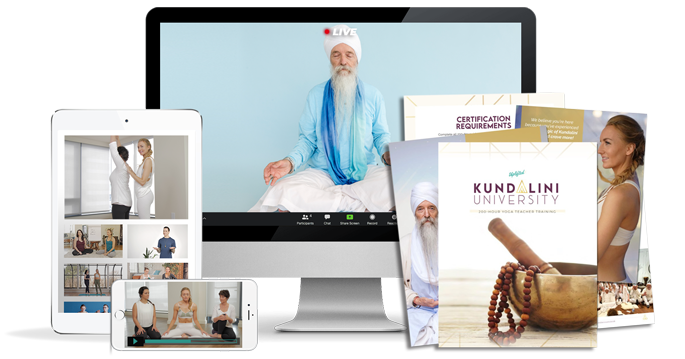
YOU MIGHT ALSO LIKE
- Practicing Kundalini For Anxiety: Move Energy To Feel Balanced
- Trauma-Informed Kundalini Yoga: A Heart-Centered Approach to Healing
- Harnessing the Power of Kundalini Divine Feminine for Transformation
- Kundalini for Feminine Energy: Ignite Your Creative Power and Passion
- Mastering the Sufi Grind: Benefits and Techniques for All Levels
- Kundalini Yoga for Chakras: An Uplifted Guide to Energy Balance
- Discover the Benefits of the Gobinday Mukunday Mantra for Well-Being
- Nabhi Kriya: Ignite Your Inner Fire and Personal Power
- Ek Ong Kar Sat Gur Prasad: Kundalini Mantra For Manifestation
- Tantric Har Chant: How It Fuels Prosperity and Inner Power
- Powerful Mantra for Protection Against Negative Energy and Harm
- The Power of Humee Hum Brahm Hum Mantra for Connection and Healing
- The Sa Re Sa Sa Mantra: Connecting Breath, Light, and Creativity
- What Is The Ajai Alai Mantra In Kundalini Yoga?
- What Is Sat Nam Rasayan? How And When To Practice
